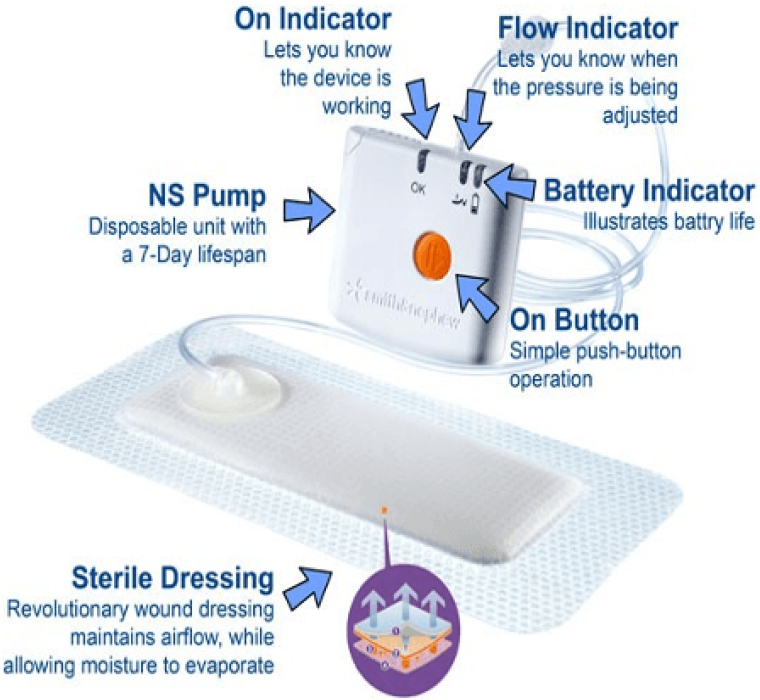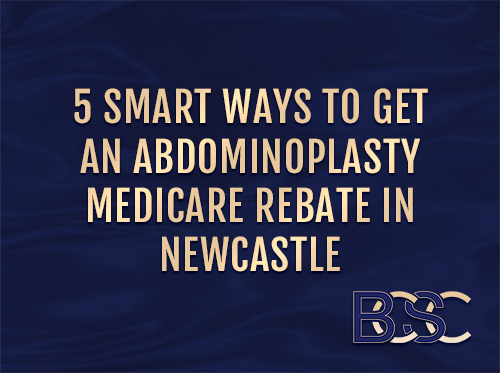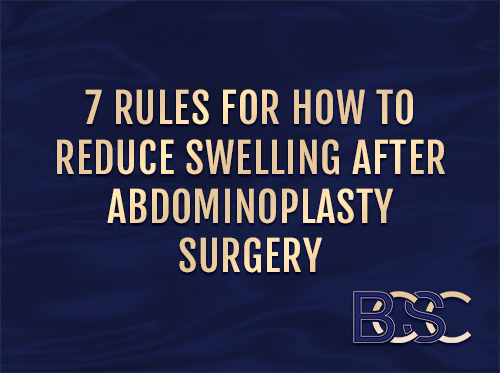Using Closed‑Incision Negative Pressure Therapy (PICO™) After Abdominoplasty
This page explains how and why our surgeons may use single‑use closed‑incision negative pressure therapy (ciNPT), such as the PICO™ system, after abdominoplasty (tummy tuck/abdominoplasty). It is general information only and does not replace a consultation.
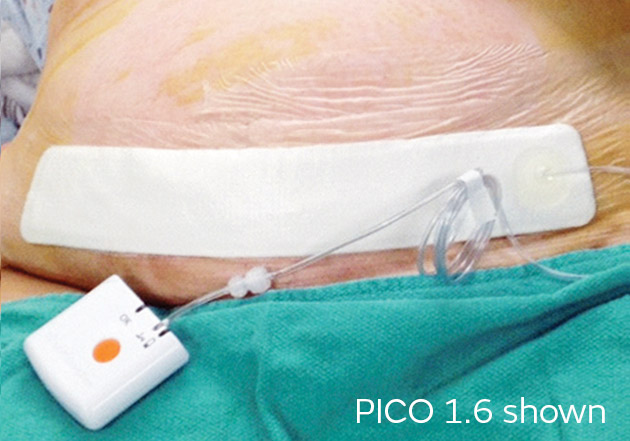
What is closed‑incision negative pressure therapy?
Closed‑incision negative pressure therapy uses a small, battery‑powered pump attached to a specialised dressing to apply gentle suction (negative pressure) across a closed surgical incision. The dressing helps manage fluid (exudate), supports the edges of the incision and provides a barrier to external contamination while you heal in the early post‑operative period. Many single‑use systems are canister‑free and are designed for up to seven days of wear per dressing, depending on exudate and your surgeon’s plan.
Colloquial term: PICO dressing
Medical term: single‑use closed‑incision negative pressure wound therapy (ciNPT)
When we may consider ciNPT after abdominoplasty
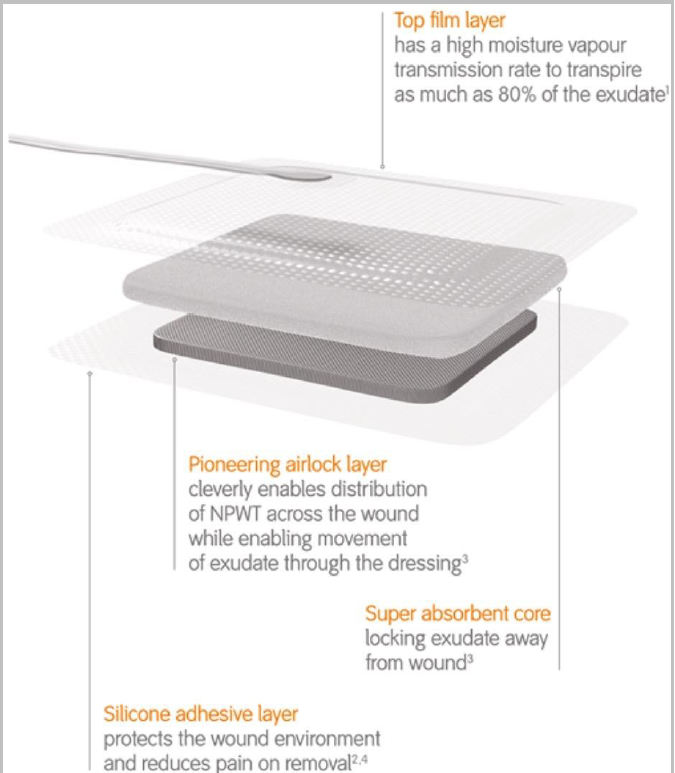
Not every patient requires ciNPT. Your surgeon may recommend it for higher‑risk incisions or patient factors, for example:
- Extensive incisions (e.g. extended or fleur‑de‑lis abdominoplasty, circumferential body lift/belt lipectomy)
- Post‑weight‑loss patients with reduced skin elasticity
- Higher BMI or increased risk of wound complications
- Diabetes or other comorbidities that may affect healing
- Revision surgery or a history of wound problems (e.g. seroma, dehiscence)
The decision is individualised and balances potential benefits, risks, comfort and cost. We will discuss this with you during your pre‑operative planning.
Potential benefits (evidence snapshot)
Research across several surgical specialties suggests that, in selected patients, ciNPT can reduce some early wound complications (such as surgical‑site infection, dehiscence or seroma) compared with standard dressings. Evidence quality varies between studies, and results are not guaranteed for an individual patient. Your surgeon will advise whether ciNPT is appropriate for your circumstances.
Key points
- Some randomised and observational studies report fewer early wound complications with ciNPT on closed incisions in higher‑risk patients.
- Meta‑analyses have shown reductions in surgical‑site complications in specific settings; other reviews note that overall certainty of evidence can be low to moderate and results may differ by procedure and risk profile.
- For abdominoplasty and other body‑contouring procedures, ciNPT is one of several strategies used to support early incision management.
How it is applied
ciNPT is applied in the operating theatre under sterile conditions once your incision is closed. The dressing is carefully sealed and connected to a small pump. You usually wake up from surgery with the system in place.
- Wear time: Most single‑use systems are planned for about 7 days per dressing. Your exact schedule (and whether a second dressing is used) is determined by your surgeon.
- Comfort and mobility: The pump is small and designed to be carried on your clothing or placed in a pocket/pouch. There is no canister; fluid is managed within the dressing.
Looking after the dressing at home
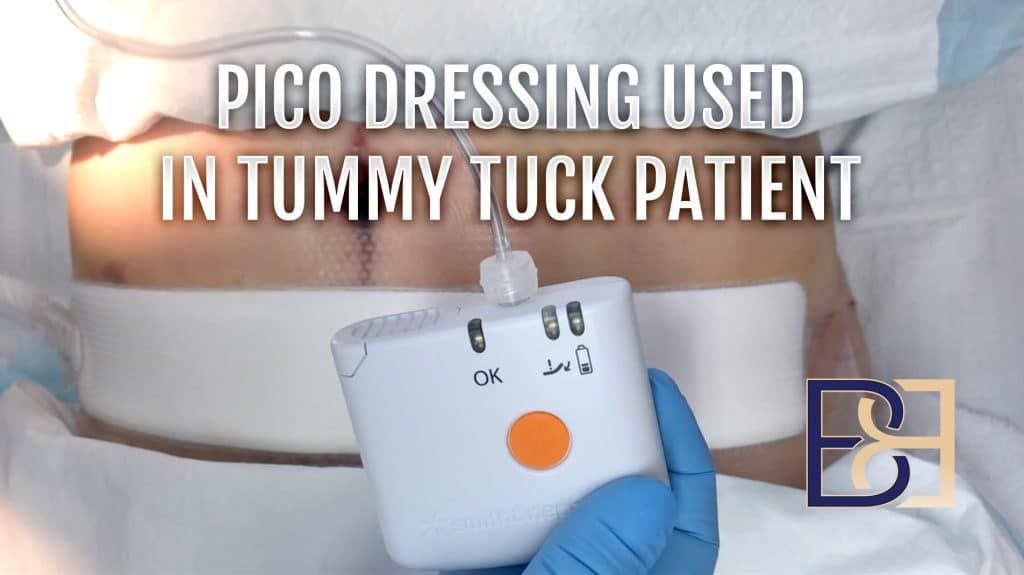
Showering
Light showering is usually permissible while the dressing is in place. Keep the pump dry. Do not submerge the dressing and avoid direct spray on the dressing seal. Your care team will show you how to disconnect/reconnect the pump if needed for showering.
Lights and alerts
A flashing green light typically indicates the system is running. If an amber/orange light flashes, this may indicate an air leak, a full dressing, or low battery. Smooth down the dressing edges and press the start button as instructed. If the alert persists, or if you are unsure, contact our nursing team.
Do not self‑adjust
Please do not attempt to remove or reposition the dressing yourself. If you experience pain, increasing redness, odour, fever, or the dressing looks saturated, contact the clinic.
Follow‑up
You’ll usually return around day 7 for review and dressing removal or change. Additional visits are arranged if clinically indicated.
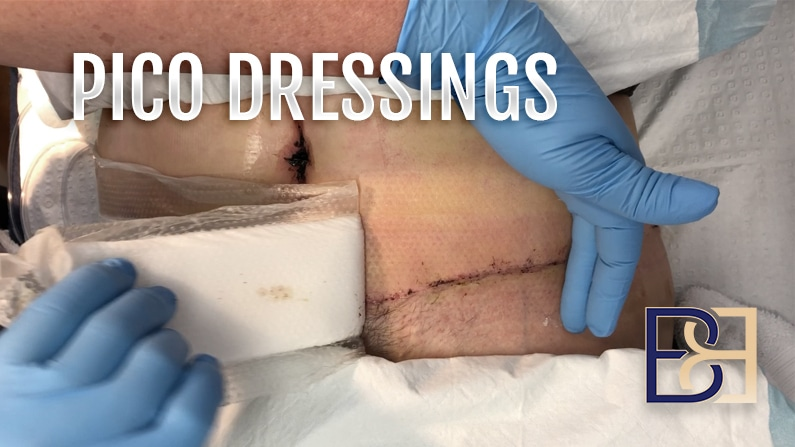
When ciNPT may not be appropriate
ciNPT is not used in all situations. Based on device instructions for use, it is generally not suitable when there is:
- An open or infected wound that has not been treated
- Necrotic tissue with eschar
- Exposed arteries, veins, nerves or organs, or exposed anastomoses
- Untreated osteomyelitis
- Active bleeding requiring control
- Known sensitivity to dressing components
Important: The pump contains a magnet. Keep it at least 10 cm away from implantable electronic devices (e.g. pacemakers, defibrillators, insulin pumps, neurostimulators). Your surgeon will check for specific contraindications before use.
Risks and limitations
All medical dressings can have drawbacks. With ciNPT these may include skin irritation, blistering around the adhesive borders, discomfort, air‑leak alarms, adhesive reactions, the need to replace batteries, and additional cost. While ciNPT can support early healing in some patients, it does not replace meticulous surgical technique, haemostasis, and standard post‑operative care.
Frequently asked questions
Can I shower?
Yes—light showering is typically allowed. Keep the pump dry, avoid direct spray/submersion, and follow the instructions provided by your nurse.
How long will I wear it?
Most patients wear the dressing for about 7 days. Your plan may differ based on incision length, exudate and other factors.
Will it guarantee fewer complications or a “better” scar?
No. ciNPT may reduce certain early complications in selected patients, but results vary. Long‑term scar appearance depends on many factors, including genetics, incision placement, and post‑operative care.
Is it covered by Medicare?
Coverage for dressings and consumables can vary. We will outline costs before surgery and provide a detailed quote.
Plain‑language summary (colloquial + medical term)
- PICO dressing (single‑use ciNPT) is a specialised post‑surgery dressing used on closed incisions after tummy tuck (abdominoplasty) to help manage fluid and protect the wound while it heals.
- Not everyone needs it. Your surgeon may suggest it if your incision or health factors place you at higher risk of wound problems.
- You’ll usually wear it for about a week and then return for review.
References and further reading (selected)
- Cochrane Review: Negative pressure wound therapy for surgical wounds healing by primary closure (updated 2022).
- Abesamis GM, Chopra S, Vickery K, Deva AK. A Comparative Trial of Incisional Negative‑Pressure Wound Therapy in Abdominoplasty. PRS Global Open. 2019.
- Saunders C, Nherera LM, Horner A, Trueman P. Single‑use negative‑pressure wound therapy vs conventional dressings for closed surgical incisions: systematic review and meta‑analysis. BJS Open. 2021.
- Manufacturer patient/user guides for PICO™ single‑use NPWT systems (showering, alerts, wear time, contraindications).
